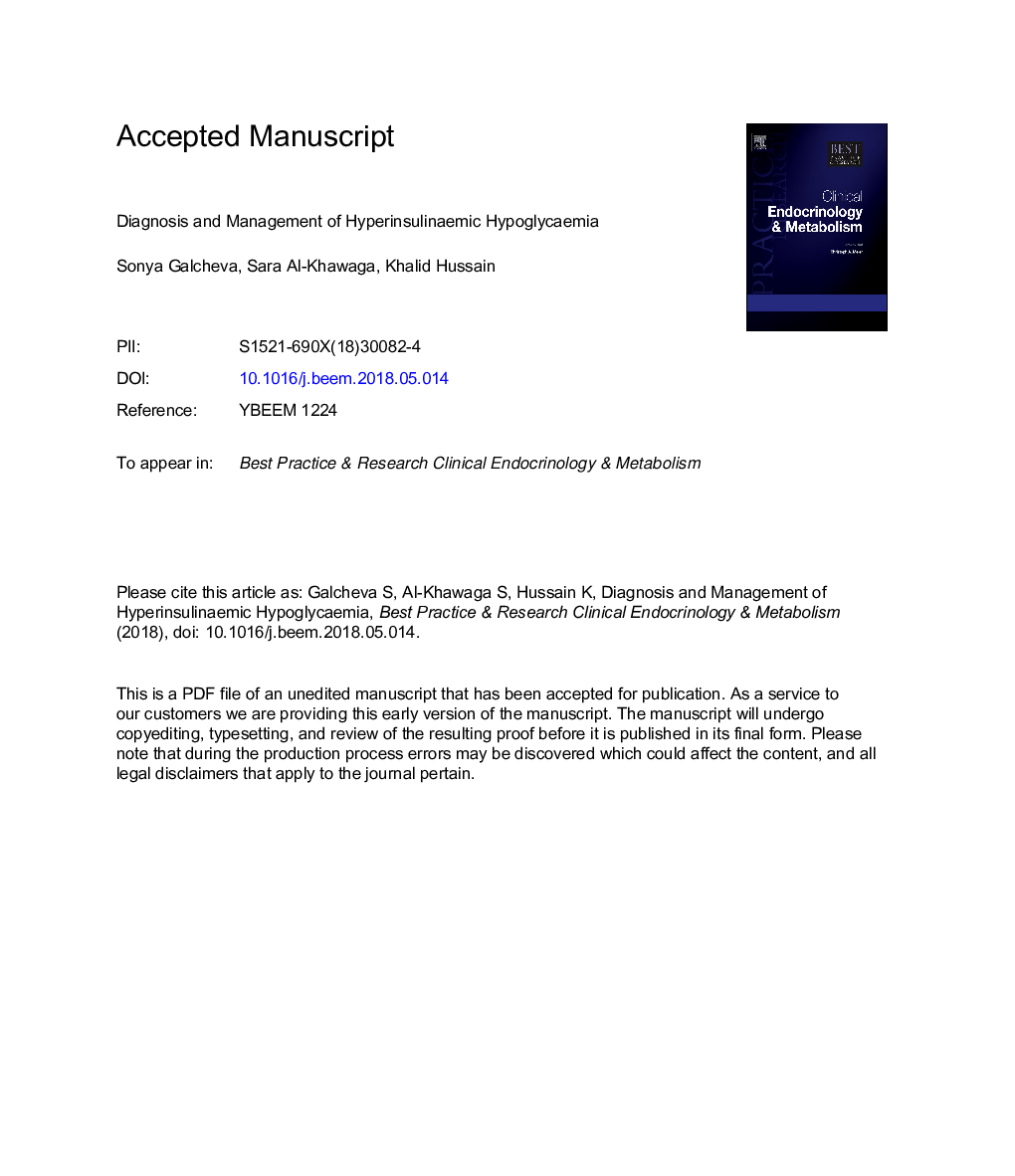| کد مقاله | کد نشریه | سال انتشار | مقاله انگلیسی | نسخه تمام متن |
|---|---|---|---|---|
| 8627291 | 1568653 | 2018 | 57 صفحه PDF | دانلود رایگان |
عنوان انگلیسی مقاله ISI
Diagnosis and management of hyperinsulinaemic hypoglycaemia
ترجمه فارسی عنوان
تشخیص و درمان هیپوگلیسمی هیپرازولینمی
دانلود مقاله + سفارش ترجمه
دانلود مقاله ISI انگلیسی
رایگان برای ایرانیان
کلمات کلیدی
موضوعات مرتبط
علوم زیستی و بیوفناوری
بیوشیمی، ژنتیک و زیست شناسی مولکولی
علوم غدد
چکیده انگلیسی
Hyperinsulinaemic hypoglycaemia (HH) is a heterogeneous condition with dysregulated insulin secretion which persists in the presence of low blood glucose levels. It is the most common cause of severe and persistent hypoglycaemia in neonates and children. Recent advances in genetics have linked congenital HH to mutations in 14 different genes that play a key role in regulating insulin secretion (ABCC8, KCNJ11, GLUD1, GCK, HADH, SLC16A1, UCP2, HNF4A, HNF1A, HK1, PGM1, PPM2, CACNA1D, FOXA2). Histologically, congenital HH can be divided into 3 types: diffuse, focal and atypical. Due to the biochemical basis of this condition, it is essential to diagnose and treat HH promptly in order to avoid the irreversible hypoglycaemic brain damage. Recent advances in the field of HH include new rapid molecular genetic testing, novel imaging methods (18F-DOPA PET/CT), novel medical therapy (long-acting octreotide formulations, mTOR inhibitors, GLP-1 receptor antagonists) and surgical approach (laparoscopic surgery). The review article summarizes the current diagnostic methods and management strategies for HH in children.
ناشر
Database: Elsevier - ScienceDirect (ساینس دایرکت)
Journal: Best Practice & Research Clinical Endocrinology & Metabolism - Volume 32, Issue 4, August 2018, Pages 551-573
Journal: Best Practice & Research Clinical Endocrinology & Metabolism - Volume 32, Issue 4, August 2018, Pages 551-573
نویسندگان
Sonya (Consultant in Paediatric Endocrinology), Sara (Post-doctoral Fellow), Khalid (Professor of Pediatrics),
